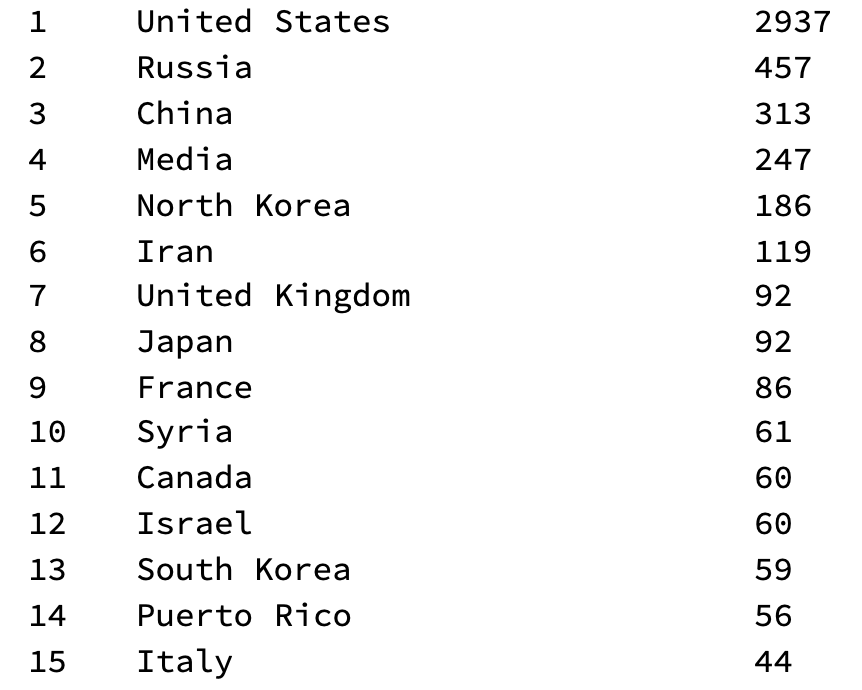Hi Marco,
Thanks for the suggestion. Rather than a complete reset, I just deleted the contents of $CacheBaseDirectory and that resolved the issue. Looks like the cache was corrupted.
I noticed a couple of discrepancies with your results.
In the count of indirect reference countries I see a significantly higher number for United States. Since you mentioned that you ignored errors, it is possible that GeoIdentify succeeded more often for me.

The count of Twitter handles. I have no explanation for this discrepancy.
{"@realdonaldtrump" -> 493, "@whitehouse" -> 235,
"@foxandfriends" -> 141, "@foxnews" -> 140, "@flotus" -> 90,
"@potus" -> 67, "@scavino45" -> 60, "@tomfitton" -> 57,
"@ivankatrump" -> 54, "@nytimes" -> 50, "@seanhannity" -> 47,
"@judicialwatch" -> 46, "@dbongino" -> 42, "@gopchairwoman" -> 42,
"@vp" -> 41, "@erictrump" -> 36, "@cnn" -> 33, "@fema" -> 32,
"@loudobbs" -> 31, "@donaldjtrumpjr" -> 27, "@abeshinzo" -> 25,
"@tuckercarlson" -> 23, "@jim_jordan" -> 22, "@danscavino" -> 21,
"@senatemajldr" -> 21, "@mariabartiromo" -> 20,
"@charliekirk11" -> 20, "@gop" -> 19, "@foxbusiness" -> 18,
"@emmanuelmacron" -> 17, "@dhsgov" -> 17, "@repmarkmeadows" -> 16,
"@marklevinshow" -> 16, "@lindseygrahamsc" -> 16, "@msnbc" -> 15,
"@mike_pence" -> 15, "@judgejeanine" -> 14, "@paulsperry_" -> 14,
"@ingrahamangle" -> 14, "@secpompeo" -> 13, "@netanyahu" -> 13,
"@washingtonpost" -> 12, "@presssec" -> 12, "@stevescalise" -> 11,
"@nbcnews" -> 11, "@drudge_report" -> 11, "@jessebwatters" -> 11,
"@dcexaminer" -> 11, "@abc" -> 11, "@devinnunes" -> 10}
Neither of the discrepancies impact your conclusions.
I agree with Vitaliy. Your post is a great example of "Computational Journalism", we need more of that.
Rohit